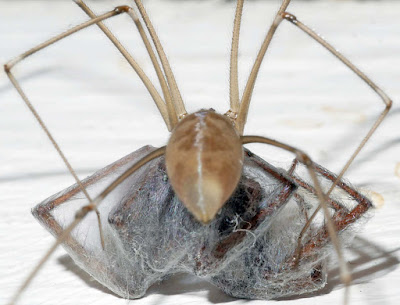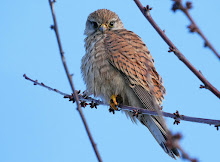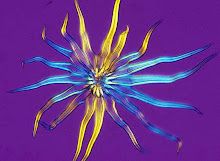These strange white sheaths around the stems of grasses are the spore-producing tissue of the fungus known as choke Epichloe typhina. It's present inside the grass all year-round, living as microscopic hyphae within the spaces between cell and benefitting from sugars produced by the host's photosynthesis, but is only visible to the naked eye in summer, when it produces its spores externally around the stem. The white fungal sheath will turn orange-brown when the spores are ripe and ready to be shed, when they are often carried away by small flies.
The fungal infection tends to prevent the grass culms from flowering, promoting multiple shoot formation instead, but in return the fungus increases its host's drought resistance and produces toxic alkaloids that deter grazing animals, so the relationship between fungus and grass is symbiotic and not simply parasitic.
I found these specimens growing beside a footpath at Wolsingham, Weardale this week.





















.jpg)
























